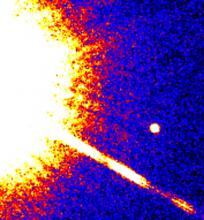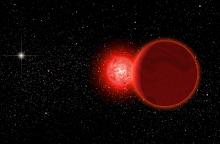Listen to today's episode of StarDate on the web the same day it airs in high-quality streaming audio without any extra ads or announcements. Choose a $8 one-month pass, or listen every day for a year for just $30.
You are here
Stellar Zaps
There’s no way to dive into the heart of a star to learn what’s going on. So scientists are creating their own stars here on Earth. The most recent experiment is creating the conditions found in the most common stars in the galaxy.
Scientists have been using a facility at Sandia National Laboratories in Albuquerque for years. It builds up a massive charge of electricity, which it discharges in an instant. That creates extremely high temperatures and pressures. Astronomers have used that to simulate conditions in several types of stars.
The current experiment is using the National Ignition Facility — the world’s most powerful laser. It’s at Lawrence Livermore National Laboratory in California. It generates almost 200 laser beams, which focus on a target area the size of a pencil eraser.
Scientists are using the lasers to create the conditions inside red dwarf stars. They account for more than two-thirds of all the stars in the galaxy — including our closest neighbor star. Yet they’re so small and faint that not a single one is visible to the unaided eye.
Conditions inside these stars are poorly understood. But they have a big impact on conditions at the surface. Many red dwarfs produce huge eruptions of radiation and charged particles. That could make it impossible for life to survive on any planets that orbit them. So understanding what’s happening inside red dwarfs can tell us a lot about whether anything could live near them.
Script by Damond Benningfield





